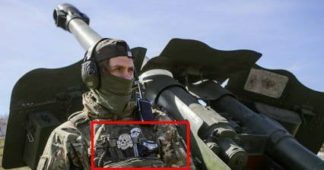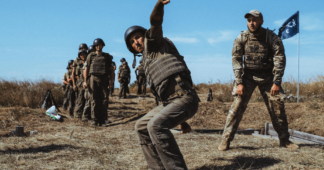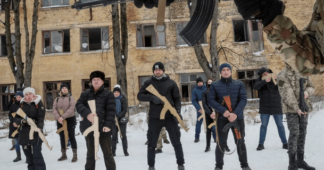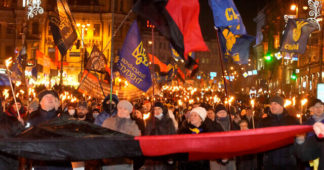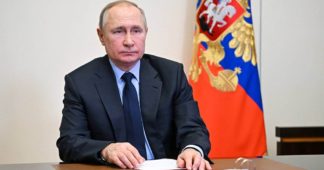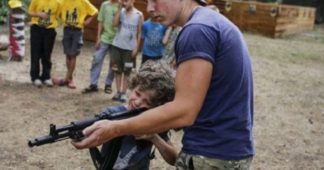Jun 10, 2022
On Friday, Russian diplomats denounced the Reuters news agency for failing to notice that a Ukrainian they had only identified as a “local resident” in the city of Kharkov had an elaborate Nazi tattoo on his arm.
“We corrected your oopsie, Reuters,” The Russian Arms Control Mission in Vienna tweeted on Friday, putting a red circle around the man’s tattoo and displaying an enlarged image next to it, showing it more clearly.
“In case you forgot, a Nazi is a Nazi is a Nazi” add the mission.
Diplomats called the photo “another propaganda stunt to slander Russia.” Reuters had captioned the photo as following an alleged Russian strike on a residential area of Kharkov. Moscow has always denied attacking civilian infrastructure, insisting they only targeted military objects.
"No Nazi in #Ukraine"(c) – We've fixed your oopsie, @Reuters – another propaganda stunt to slander Russia
In case you forgot, a #Nazi is a Nazi is a Nazi
Thus, all mission goals of the Special Military Operation in Ukraine will be accomplished pic.twitter.com/6uCURP6Uqm
— Russian Arms Control Delegation in Vienna (@armscontrol_rus) June 10, 2022
“A local resident inspects a van damaged in a military strike, amid Russia’s attack on Ukraine,” said the caption of the photo, taken by Reuters photographer Ivan Alvarado and posted June 8 as part of a photo gallery.
The man, whose face cannot be seen in the photo, looks into a white van strewn with shrapnel. A huge swastika inside a circle can be seen under the left sleeve of his light blue t-shirt, part of a tattoo that resembles an armband worn by members of the Nazi Party.
The Russian arms control mission in Austria was not the first to notice the tattoo. Several social media users responded to Reuters questioning the caption or the choice to include it in the collage.
“There must be a lot of Nazis in this area if Reuters couldn’t find a photo of a Ukrainian without a swastika tattoo,” said a representative commentary.
Moscow’s stated goal for sending troops to Ukraine in February was to “demilitarize and denazify” the Kyiv government. The United States and its allies, which support Ukraine, have accused Russia of making up or exaggerating the existence of Nazis in the country. Time and time again, however, the supposedly non-existent Nazis continued to feature in media photographs.
On May 9, as Russia celebrated victory over Nazi Germany, Ukrainian President Volodymyr Zelensky posted a photo of a Ukrainian soldier wearing a “Totenkopf” (skull’s head) crest of the 3rd SS Panzer Division.
In March, the Ukrainian Foreign Ministry tweeted pictures of female soldiers, clearly showing “Sonnenrad” (Black Sun) symbol used by the German SS as well as the notorious Ukrainians “Azow” militia. NATO also shared a similar photo of a Ukrainian soldier, only to hastily delete the tweet after activists online underline that it featured the same symbol.
At the end of May, following the surrender of most of its fighters in Mariupol, the infamous Azov militia announced that it was changing its main symbol to the Ukrainian trident, dropping the “Wolfangel” rune used before. The Wolfsangels and Sonnenrads were handpicked by Azov founder Andrey Biletsky when he formed the militia in 2014, to support the government established after the US-backed coup in Kyiv .
We remind our readers that publication of articles on our site does not mean that we agree with what is written. Our policy is to publish anything which we consider of interest, so as to assist our readers in forming their opinions. Sometimes we even publish articles with which we totally disagree, since we believe it is important for our readers to be informed on as wide a spectrum of views as possible.
